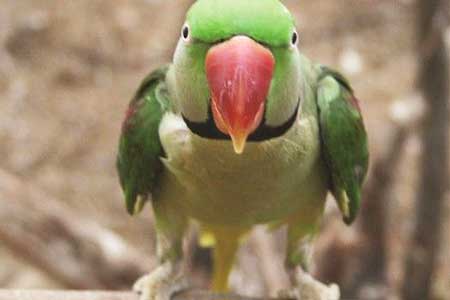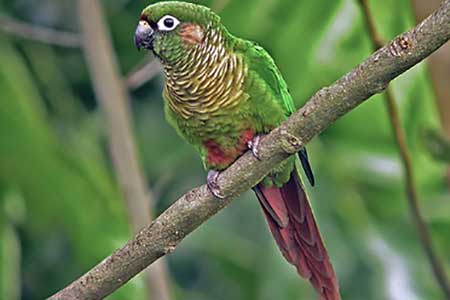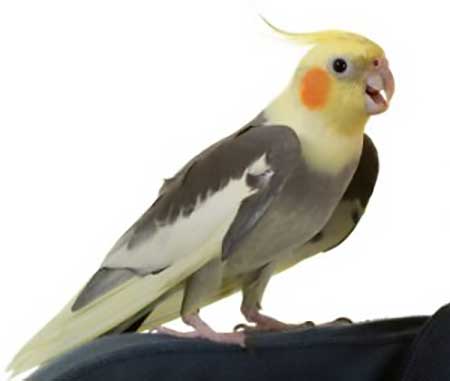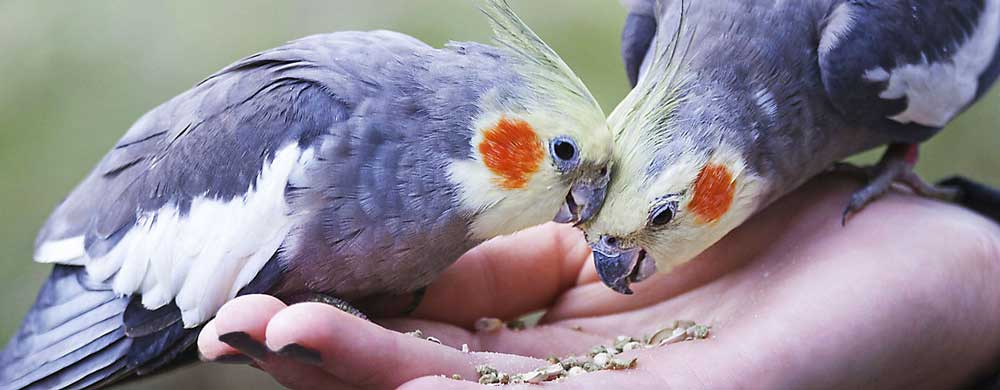Parrot Profiles
Parakeets, Conures, & Cockatiels
Parrots can make wonderful, entertaining pets. Large parrots tend to make a lot more noise that smaller parrots like cockatiels and all are known to be more vocal when ignored or bored, Ensure they have things inside their cage for entertainment and also spend time playing with them each as this trains them to be more tame and affectionate.
Various species of parrots can retain life for up to 100years so the purchase of a parrot should be considered a lifetime commitment.
Alexandrine Parakeet
-
Scientific Name: Psittacula eupatria
Origin: India
Known for their beauty, intelligence, and excellent talking abilities, Alexandrine Parakeets have been popular as pets for centuries. Once reserved as pets for nobility and the elite, these birds are highly regarded by many as some of the best pet parrots available.
Size:
The Alexandrine Parakeets, although a medium sized bird, are among the largest parakeet species. Many Alexandrines reach a length of up to 65cm, although much of this
length is accounted for by their long, elegant tail feathers.

Average Lifespan:
Healthy pet Alexandrine Parakeets, when properly cared for, can live for up to 40 years in captivity.
Colors:
Alexandrine Parakeets, like many asiatic parrots, are a dimorphic bird species.
- Adult males display various hues of green all over their bodies, with a black and rose colored ring around their necks.
- Females of the species display the same coloring, without the neck rings.
- Both males and females have a deep rose colored patch at the tops of their wings.
Feeding:
Like all parrot species, balanced nutrition is very important for pet Alexandrine Parakeets. Most do well on a diet consisting of fresh vegetables, leafy greens, grains, some healthy seed and tree nut. Fresh vegetables are the cornerstone of a good diet for parrots.
Exercise:
Alexandrine Parakeets are very active birds, and they need plenty of exercise to maintain their physical and emotional health. A large flight cage is preferable for these birds. A pet Alexandrine Parakeet should be allowed a minimum of 3 to 4 hours a day to stretch, play and exercise outside of its cage. This playtime should always be supervised in a safe, "birdproof" area, as Alexandrines are very curious and can get into trouble if left to their own devices. Owners of Alexandrine Parakeets recommend that they be provided with plenty of safe toys to play with and chew on.
Maroon Bellied Conure
-
Scientific Name: Pyrrhura frontalis
Origin: South America
The colorful maroon-bellied conure has the reputation of being the quiet member of the conure family. Relatively speaking that may be true; however, it is only in comparison to other conures. These sweet birds are loud, especially in the early morning; they get very excited when they see the sun rise, and they express their excitement.
The maroon-bellied conure is found in southeastern Brazil, Uruguay, Paraguay and northern Argentina. They are smaller birds, approximately 9 to 10 inches in length. Maroon-bellied conures are primarily green and have a golden barring on the chest and distinct heart-shaped maroon shading on the belly. The flight feathers are blue and the tail is green with a dull reddish color. The beaks and feet are dark grey or black. Their color comes in after the first molt.

Maroon-bellied conures are inquisitive, playful, active, spunky and curious. They love to hang upside down and clamor along the cage bars, while waiting for you to play with them. They have a sweet personality, and because they are small and not very messy, they are the perfect pet for people living in apartments.
Maroon-bellied conures are loveable and friendly and love to be cuddled and handled by their owners. They love to see their owners come into the room and will greet you in grand fashion. Maroon-bellies have the ability to learn to talk, although they usually don’t. However, they have their own language and you can learn theirs. Certain chirps mean certain things, such as “feed me” or “play with me” or “thank you” and especially “GOOD MORNING – EVERYBODY UP!” Some have learned to mimic other human sounds as well, like sneezes and coughs.
Most conures live 15 to 35 years.
Housing
- Conures are active and playful birds, who need space to scramble around in. The cage should be large enough so that your bird can spread his wings without touching any wall or the roof.
- Perches should be of different shapes and thickness and should be kept clean. You might want to place one near the door to allow your pet to come out easily on his own.
- Conures love to play and can become bored quickly if they don’t have anything to amuse them, so provide at least three toys and switch them around often, so they’ll keep your pet more entertained.
- Being energetic they need to get out the cage to play and exercise everyday in a “bird safe” area.
Feeding
- Being very curious and playful, they like a varied diet, which in addition to a pelleted diet should contain nuts, seeds, fruits and vegetables. Food should also offer a wide variety of shapes, sizes, colors and textures.
- Conures are prone to conure bleeding syndrome, which is thought to be caused by a lack of Vitamin K, found in foods like broccoli.
- Anything you eat is pretty much okay with your conure, except for avocado, which is toxic to birds.
- Be sure to remove perishable food after a couple of hours so that it doesn’t spoil.
- Calcium is a necessity and you can offer this in the form of a cuttlebone or calcium block. If your conure does not take to these, you can scrape the soft surface of the cuttlebone with a knife over the dish of food every day.
Cockatiels
-
Scientific Name: Nymphicus hollandicus
Origin: Australia
Cockatiels are among the most popular pet birds. Small parrots with a variety of color patterns and a crest, they are attractive as well as friendly. Because of their small size, cockatiel care and taming is easier than some other parrot species. They are capable of mimicking speech, although they can be difficult to understand. However, they are quite good at whistling and can often be taught to whistle tunes.

Cages for Cockatiels
Cockatiels are active and playful and should have a large cage. Opinions on the minimum size varies, but a good rule of thumb is at least 50cm by 50cm wide, and 140cm tall as a bare minimum.
- The spacing on the cage bars should be no more than 2cm (any larger is a safety hazard).
- Horizontal cage bars offer the best opportunity for climbing and exercise.
- There should be space to place at least a couple of perches at different levels with enough space to comfortably move between them.
- Many cockatiel cages come with a removable bottom tray for easy cleaning.
Feeding Cockatiels
Variety is the key to a healthy diet. Seeds can be a nutritious part of the diet but are high in fat so should only make up a part of the diet and a wide variety of other foods should complement.
- A variety of fresh vegetables and fruit should be offered, although persistence might be needed before your bird will try new foods (particularly if they are accustomed to an all-seed diet).
- Proteins such as hard boiled egg, legumes, and cooked meats can be offered in moderation.
- Sprouted seeds are also an excellent way to add variety to your bird’s diet.
- Avoid avocado as it is toxic to most birds..
Cockatiel Quick Facts
- Lifespan: cockatiels regularly live 15-20 years with proper care (up to 30 reported).
- Reputation as a gentle and docile bird; often like to be petted and held.
- Males are thought to be better at mimicking speech and whistles.
- Pairs of birds make good company for each other but usually will not bond as well with their owners or mimic speech or sounds. A single bird is fine, as long as you spend a significant amount of time interacting with the cockatiel on a daily basis.
- Playful and active, and while they vocalize and whistle they are not as loud as some other parrots.

20185